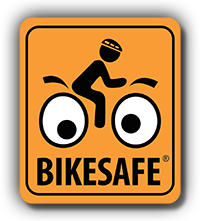Back to main
Finding safe places:
At the cornerstone of every family bike outing is a safe place to ride. Unfortunately the lack of safe streets with proper separation of automobile traffic is one of the greatest barriers to stress-free bicycle riding that we currently face today.
Nevertheless, even though our streets often fail us as they are now, we should not give up our opportunity to ride. Neighborhood streets and new protected bike lanes open up many untapped opportunities. Plus, the creation of safe infrastructure for the future usually requires enthusiastic neighbors and zealous advocates to ride in the present - even though ideal infrastructure does not exist - to justify the creation of safer, more equitable streets for our future.
The wide world of bike lanes:
As many who ride are aware, not all bike lanes are created equal. In fact, protected bike lanes, widely agreed to be the safest bike infrastructure when built correctly, are still few and far between in the US.
However, given the opportunity, protected bike lanes are your friend, as shown here:
Making neighborhood streets work:
While we'd love to see protected bike lanes everywhere, the one place that doesn't usually have them are neighborhoods with single-family homes. Older developments like these were often designed around narrower streets, like this one:
Neighborhood streets as alternate routes:
Still, neighborhood streets are often our only escape from other streets that really should have significant protected bike lane protection on them. As such, mapping out an alternative route, using these streets, can open up a number of destinations that would have been quite dangerous to get to otherwise.
Case in point, Google Maps gives the route shown here as the most direct way for someone in eastern Coconut Grove - a neighborhood in Miami, Florida - to get to the nearest public elementary school:
Looking towards a safer future:
Despite many claims that our roads are inflexible to change, this isn't true. While it is no secret that the historic approach to traffic engineering in the US prioritizes automobile speed over safety - which, ironically, fails both goals - the fact that new, protected bike lane infrastructure exists in the US at all is proof that the old approach and standards are giving way to a better future.
In fact, the current push to revise the Manual on Uniform Traffic Control Devices (MUTCD) is just one example of concerned parents, people on bicycles, and road engineers reassessing the errors of the past.
This quick video from Not Just Bikes explains it best:







